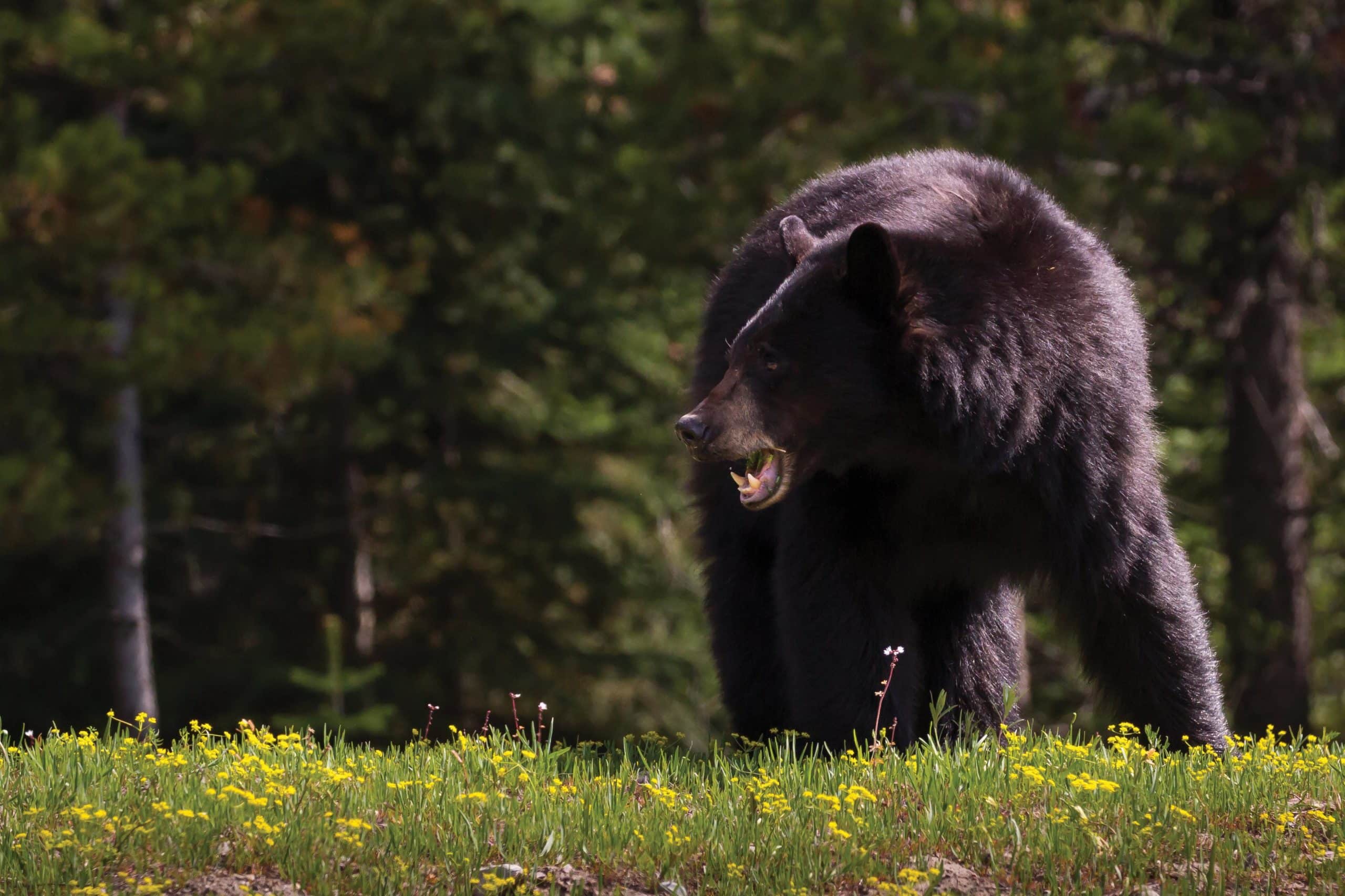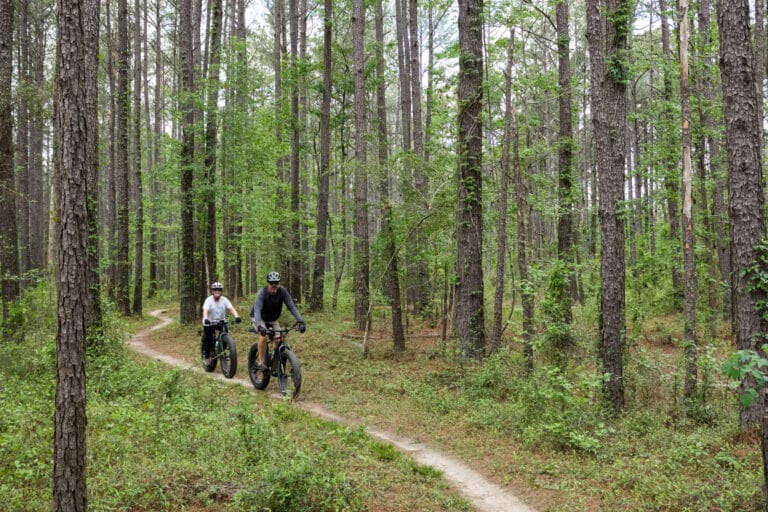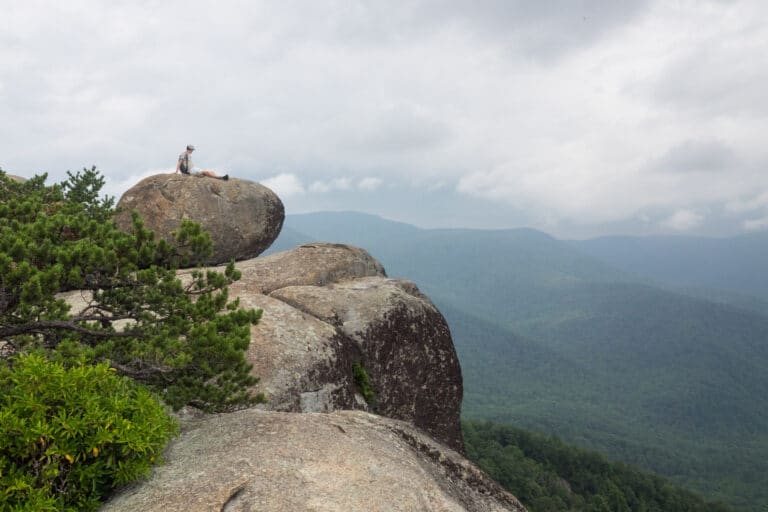A dangerous encounter leaves a pet scarred and an owner with increased awareness.
As we crossed the first creek and entered the rhododendron-filled green tunnel, our pup’s boredom could no longer be contained. She wandered away for one of her usual quick runs ahead of us to indulge her nose in all the best smells. This part of the woods gets relatively minimal traffic and is often used by locals to let pets release some off-leash energy. No more than 10 seconds later, I heard a piercing sound that still lingers in my head months later.
Lou Lou, our eight-year-old blue nose pitbull, has been on this particular trail countless times. It’s our local escape near home on the east side of Asheville, the spot where my wife and I often find quick relief in the woods after long work days. But admittedly the familiarity often makes us complacent, and since Lou Lou is well trained we occasionally let her cruise ahead, convinced by repetition that she’ll always be back in minutes.
But this time was different. Lou Lou, out of sight, alarmingly squealed. I started screaming her name and ran towards the sound. This quickly took me off-trail, where I climbed an embankment through dense undergrowth. At the crest, I found myself looking down on a small creek, about 50 feet below, where I caught a glance of my pup scrambling. But then my attention was suddenly averted to a more significant hazard—a large black bear running straight towards me.
I’ve had plenty of bear encounters at close distance, but this was the first time I’ve been charged.
By knee-jerk reaction, I backed off the steep slope towards the trail and grunted “Bear” in the direction of my wife. But the retreat was a mistake. This was a mother bear, whose two cubs Lou Lou had engaged as would-be playmates, and she was being aggressively protective.
Coming to my senses, I turned to face her, still approaching, then raised my hands over my head and started yelling like a deranged lunatic. Fortunately, standing my ground while making noise worked. Momma bear stopped suddenly, then turned and lumbered away in the opposite direction.
At this point I feared the worst, assuming I would be retrieving Lou Lou’s remains. But then my wife spotted our pup, back on the trail just ahead of us. She had been attacked and was clearly traumatized, so we took her back to the car and assessed her wounds: a gash on her head that exposed her skull and a whole slew of puncture wounds around her neck. Generously rushed to the front of the vet’s queue, Lou Lou spent eight hours receiving care and was able to come home at two in the morning with 20 stitches and a stent to assist drainage and prevent infection.
Months later, healed but scarred, she’s proven to be remarkably resilient, regularly back on the trails—but now always wearing a leash. I learned a valuable lesson about being a responsible pet owner in the wild, and I feel no ill will towards bears. If anything my respect for them has grown. The sow felt provoked when Lou Lou approached her cubs, and she was just trying to be a good parent.
As development and population growth continue in Southern Appalachia, bear encounters with humans are becoming more frequent. They occur regularly on neighborhood streets around my house in Asheville. And as our human footprint encroaches deeper into wildlife habitats, it’s becoming more important for outdoor enthusiasts who recreate with pets to use proper etiquette. Bears that are startled, threatened, or desensitized with human food can become dangerous—and ultimately might need to be euthanized.
I’ll never stop hiking with Lou Lou. I believe trail time with dogs has many benefits for both pets and owners. And while I know opinions vary about leash use in the backcountry, I’ve certainly learned the necessity of being cautious about interactions between domestic and wild animals in the woods.
Black Bear Safety
Steer Clear – It’s best to avoid bear interaction if possible, so keep food contained and make some noise on the trails. When camping, keep food in a bear canister and ideally store about 100 yards from your campsite.
Stay Calm – Statistically, confrontations between bears and humans are rare, so keep your cool, because it’s likely if a bear spots you, it will run in the other direction.
Stand Your Ground – If a bear approaches, raise your arms and make yourself look as large as possible. And don’t remove your backpack. This helps you look larger and provides protection for your back in case of an attack.
Back Away Slowly and Sideways – If the bear isn’t moving, try to step away slowly in a sideways direction. If the bear follows you, don’t run (remember, stand your ground). They are just as fast going uphill as they are going downhill and can move at speeds up to 35 mph.
Leave An Exit – Definitely don’t corner bears. Be sure to give them space, and if possible take a detour.
Fight Back – If a black bear attacks, do not play dead. If an escape is impossible, you’ll have to fight back, so center your kicks and punches on the bear’s nose and face.








